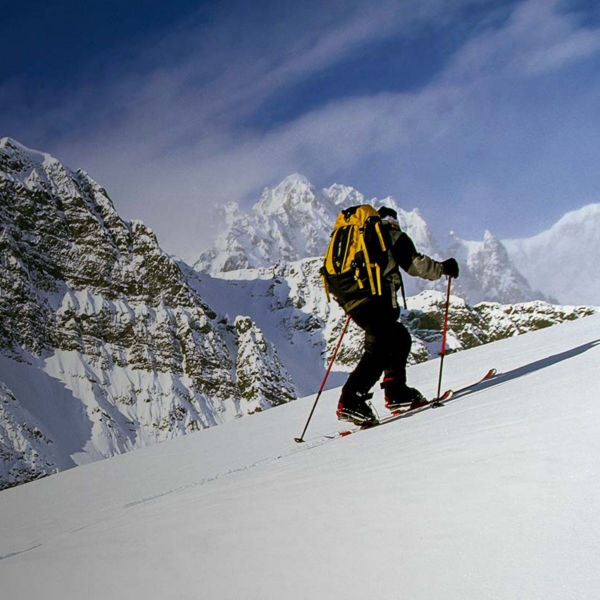
If you're tired of battling crowds at busy ski resorts—and are willing to earn your turns—then splitboarding might be for you. Splitboarding makes it possible for snowboarders to access backcountry terrain, and it utilizes a specialized snowboard that splits into two halves. Once you’ve attached climbing skins to their bases, you use the halves like skis to hike uphill. When you reach the top of the mountain, you remove the skins, reattach the halves, and use the splitboard like a regular snowboard for the descent. Here’s everything else you need to know in order to safely explore the backcountry on a splitboard.
Questions to Ask Yourself
Before venturing out on a splitboard, a few questions can help ensure you’re ready.
Am I a confident snowboarder?
Splitboarding will take you into unfamiliar and challenging terrain. Know your limits and don’t take on a route that’s beyond your abilities.
Have I learned avalanche safety?
Anyone who enters the backcountry needs to know it. Take a safety course, or at least learn the proper avalanche safety techniques, and bring avalanche safety gear like a beacon, probe, and shovel. Always check the avalanche forecast for your area before heading out.
Do I know how a splitboard works?
Splitboards function and ride differently than a typical snowboard. Familiarize yourself with your equipment and take a test ride or two on groomed trails before you get into the backcountry.
Gear
Splitboarding requires some additional gear compared to snowboarding. Here’s what you’ll need.
Splitboard
Splitboards come with a variety of systems to change the board into skis and back again. There are also a variety of bindings that flex for walking uphill and lock for turns on the descent.
Skins
Skins are the fuzzy strips that attach to the bottom of your splitboard. They allow you to slide the halves of your board forward, but they prevent you from sliding backward, so you can grip the snow to walk uphill. Most skins are larger than necessary. You’ll need to attach them to the underside of your board and then cut them to size so there’s no overhang.
Skins are often made with nylon, which is cheap and durable, or mohair, which is lightweight but less durable and more expensive. Look for skins with robust nose and tail clips to help them stay in place.
Poles
Poles give you side-to-side stability during ascents. Opt for collapsible poles that you can easily stow in your pack when it’s time to descend. Look for a three-part pole made of a light, strong material like carbon fiber or aluminum.
Boots
Snowboarding boots have a supportive but flexible design. If you already own snowboarding boots, they should work great for hiking uphill.




















